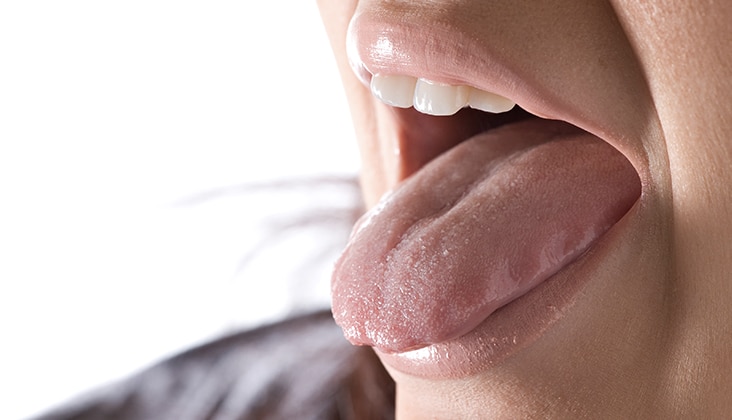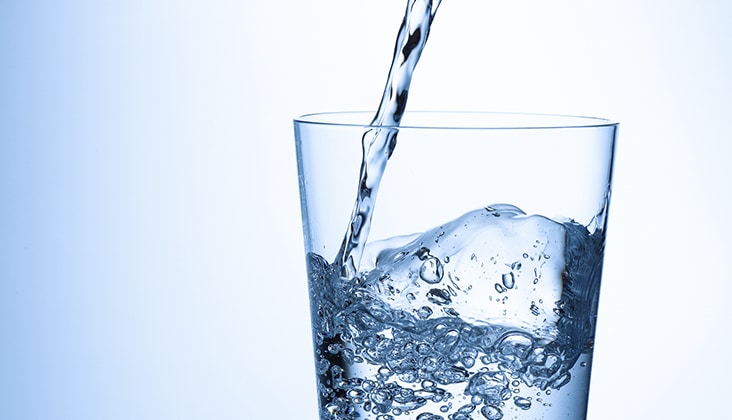Addressing Dry Mouth
Xerostomia, or perceived dry mouth, has a broad range of prevalence, ranging from 5.5% to 65%, while also considered under-reported by patients and under-recognized by practitioners.

Xerostomia, or perceived dry mouth, has a broad range of prevalence, ranging from 5.5% to 65%, while also considered under-reported by patients and under-recognized by practitioners. As such, it is important for oral health professionals to remain well-versed in xerostomia, its etiologies, and its diagnosis. Oral health professionals should be confident in assessing patients for xerostomia and providing strategies to improve quality of life for those with this common condition.
Photo Credit: vchal / iStock / Getty Images Plus

Causes of Xerostomia
Symptoms of xerostomia are caused by changes in composition and amount of saliva produced, and may include full dysfunction of salivary glands. The causes of xerostomia are multifactorial and may not be identifiable in all cases. Many cases of mild to moderate (temporary or intermediate) dry mouth can be attributed to anxiety, smoking, and alcohol consumption. Causes of more severe symptoms include polypharmacy (ingestion of multiple medications at once), chemotherapy or radiotherapy that damages salivary glands, and systemic or autoimmune diseases that result in salivary gland dysfunction.
Photo Credit: Ziga Plahutar / E+

Importance of Saliva
Typical salivary production ranges from 0.5 liters to 1.5 liters daily. It primarily consists of water; electrolytes, including sodium, potassium, calcium, bicarbonate, and phosphate; and immune and nonimmune salivary proteins, such as immunoglobulins, proteins, enzymes, and mucins. Proteins and mucins from minor salivary glands act as lubricants, coating oral tissues and protecting the mucosa from chemical, microbial, and physical injury. Saliva’s role also includes keeping tissues moist, aiding in the mastication and digestion processes, and cleansing and buffering the pH of the oral cavity, helping to prevent demineralization. Reduction in quality and quantity of saliva can increase biofilm accumulation and biofilm-related gingival diseases, along with increased caries risk and malodor.
Photo Credit: arenacreative / iStock / Getty Images Plus

Assessment Tools
Dental hygienists are prepared to clinically detect xerostomia, often identifying its presence long before a patient reports it. Assessment tools are available to aid oral health professionals in the detection of dry mouth. These include the patient’s health history, Xerostomia Inventory, and Clinical Oral Dryness Scale. The health history provides important information about the patient’s systemic health, current medications, and social habits (alcohol consumption, tobacco use, and hydration). The Xerostomia Inventory questionnaire consists of 11 questions. Each question is answered based on the frequency of symptoms, scoring from 1 to 5: never, hardly ever, occasionally, fairly often, and very often.
Photo Credit: taa22 / iStock / Getty Images Plus

Treatment Approaches
Multiple strategies are available to assist patients in managing xerostomia. Their purpose is to reduce symptoms and/or increase salivary flow, thus reducing the incidence of oral disease. The patient can consider increasing fluid intake and decreasing use of caffeine, alcohol, and tobacco. Patients may also be advised to increase humidity at night, avoid using toothpastes that contain sodium lauryl sulphate, which may be irritating, and stop consuming crunchy/hard foods. They should use soft toothbrushes, mouthrinses with fluoride or prescription-strength fluoride, and sugar-free chewing gums/candy to stimulate salivary flow. While chewing stimulates salivary flow, only gums that list xylitol as their first ingredient should be used. There are several over-the-counter mucosal lubricants , saliva substitutes, and saliva stimulants with xylitol, including in oral-adhering discs, that help maintain the feeling of moisture in the mouth.
Photo Credit: Alina Rosanova / iStock / Getty Images Plus

In-Office Management
Dental hygienists must consider how their treatment may impact the patient with xerostomia in the course of a typical appointment. In-office management must be tailored to include the use of fine prophy pastes, which are less abrasive to tissue, limiting the use of air polishers or prophy jets, regular plaque removal and application of fluoride, vigilance in caries assessments (coronal and cervical), and continuous monitoring for oral lesions and recession. Evaluating dental appliances and prosthetics (nightguards, full and partial removable dentures) for fit and noting any need for adjustments. Ongoing nutritional counseling to reduce sugar and carbohydrate consumption is also important. Regular review of the patient’s medications so those that cause dry mouth may be replaced with an alternative or reduced after discussion with his or her primary care physician.

